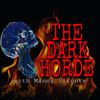UFO Buster Radio News – 408: FRB 121102 Strikes Again, Algorithm Just Discovered 50 Planets, and Nibiru May Be A Real Thing!

Scarica e ascolta ovunque
Scarica i tuoi episodi preferiti e goditi l'ascolto, ovunque tu sia! Iscriviti o accedi ora per ascoltare offline.
Capitoli
Descrizione
Join the Episode after party on Discord! Link: https://discord.gg/ZzJSrGP Mystery radio signal from space that’s on 157-day cycle just woke up right on schedule Link: https://nypost.com/2020/08/25/mystery-radio-signal-from-space-thats-on-157-day-cycle-just-woke-up-right-on-schedule/ A mysterious radio signal...
mostra di piùLink: https://discord.gg/ZzJSrGP
Mystery radio signal from space that’s on 157-day cycle just woke up right on schedule
Link: https://nypost.com/2020/08/25/mystery-radio-signal-from-space-thats-on-157-day-cycle-just-woke-up-right-on-schedule/
A mysterious radio signal beamed to Earth from a distant galaxy has been detected again by astronomers.
The so-called Fast Radio Burst repeats every 157 days with the power of millions of suns and its latest barrage arrived right on time last week.
Known as FRB 121102, scientists hope that studying the strange blinkering signal could unlock the secret to what FRBs are and where they come from.
Fast Radio Bursts are intense pulses of radio waves that last no longer than the blink of an eye and come from far beyond our Milky Way galaxy.
Their origins are unknown. Some think the energetic waves are the result of cosmic explosions, while others reckon they’re signals sent by aliens.
More than 100 FRBs have been discovered to date, but only a handful have repeated and fewer still in a predictable pattern.
Recurring bursts give scientists rare chances to study the origins of FRBs.
FRB 121102 is one of only two FRBs known to regularly repeat and its cycle was described for the first time by British scientists earlier this year.
Astronomers traced its origins to a star-forming region in a dwarf galaxy three billion light-years away.
During its cycle, bursts of milliseconds-long signals are emitted for 90 days before a quiet period lasting 67 days, for a total loop length of 157 days.
According to their paper, FRB 121102’s active phase is due to end between 31 August and 9 September 2020.
If telescopes continue to pick up bursts beyond these dates, then either its predictable pattern does not exist or has somehow evolved, they said.
Does Astronomy Need Humans? An Algorithm Just Discovered 50 New Alien Planets And May Find Many More
Link: https://www.forbes.com/sites/jamiecartereurope/2020/08/25/does-astronomy-need-humans-an-algorithm-just-discovered-50-new-alien-planets-and-may-find-many-more/#64a46111fdce
A new “machine learning” algorithm has confirmed the existence of 50 new exoplanets in data collected by NASA’s ground-breaking Kepler mission.
Although algorithms have for long been used to comb through the huge amounts of data from telescopes in the hunt for signs of planets, this is the first time that astronomers have used an algorithm based on “machine learning.”
There are currently 4,201 confirmed exoplanets, though probably billions more to discover in the Milky Way alone. Some lurk in data collected years ago—as is the case with this new discovery.
Machine learning is a form of artificial intelligence. It’s about automating repetitive tasks, essentially training a computer to recognise patterns and categorise data without any input from humans.
The example often given is that of photographs of cats and dogs. A computer program is given millions of images categorized as either cat or dog and the program then learns to identify them automatically; it creates a neural network.
How was machine learning used?
In this case, the algorithm was trained to recognise real planets using two large samples of confirmed planets and “false positives”—fake planets—from NASA’s now retired Kepler mission.
“The algorithm we have developed lets us take fifty candidates across the threshold for planet validation, upgrading them to real planets,” said lead author Dr. David Armstrong from the University of Warwick Department of Physics. “We hope to apply this technique to large samples of candidates from current and future missions like TESS and PLATO.”
What are the 50 planets like?
The 50 planets found using this new technique cover the entire gamut from smaller-than-Earth and likely rocky planets to Neptune-sized gas giants.
Orbits range from as long as 200 days to just a day.
Rogue Planets That Float in Space Without Orbiting a Sun Could Outnumber the Stars
Link: https://scitechdaily.com/rogue-planets-that-float-in-space-without-orbiting-a-sun-could-outnumber-the-stars/
Upcoming NASA mission will search for planets in the Milky Way without their own sun.
An upcoming NASA mission could find that there are more rogue planets — planets that float in space without orbiting a sun — than there are stars in the Milky Way, a new study theorizes.
“This gives us a window into these worlds that we would otherwise not have,” said Samson Johnson, an astronomy graduate student at The Ohio State University and lead author of the study. “Imagine our little rocky planet just floating freely in space — that’s what this mission will help us find.”
The study was published today in the Astronomical Journal.
The study calculated that NASA’s upcoming Nancy Grace Roman Space Telescope could find hundreds of rogue planets in the Milky Way. Identifying those planets, Johnson said, will help scientists infer the total number of rogue planets in our galaxy.
“The universe could be teeming with rogue planets and we wouldn’t even know it,” said Scott Gaudi, a professor of astronomy and distinguished university scholar at Ohio State and a co-author of the paper. “We would never find out without undertaking a thorough, space-based microlensing survey like Roman is going to do.”
The Nibiru cataclysm is a supposed disastrous encounter between the Earth and a large planetary object (either a collision or a near-miss) that certain groups believed would take place in the early 21st century. Believers in this doomsday event usually refer to this object as Nibiru or Planet X. The idea was first put forward in 1995 by Nancy Lieder,[2][3] founder of the website ZetaTalk. Lieder describes herself as a contactee with the ability to receive messages from extraterrestrials from the Zeta Reticuli star system through an implant in her brain. She states that she was chosen to warn mankind that the object would sweep through the inner Solar System in May 2003 (though that date was later postponed) causing Earth to undergo a physical pole shift that would destroy most of humanity.[4]
Show Stuff
Join the episode after party on Discord!
Link: https://discord.gg/ZzJSrGP
The Dark Horde Podcast: https://www.spreaker.com/show/the-dark-horde
The Dark Horde, LLC – http://www.thedarkhorde.com
Twitter @DarkHorde or https://twitter.com/HordeDark
Support the podcast and shop @ http://shopthedarkhorde.com
UBR Truth Seekers Facebook
Group: https://www.facebook.com/groups/216706068856746
UFO Buster Radio: https://www.facebook.com/UFOBusterRadio
YouTube Channel: https://www.youtube.com/channel/UCggl8-aPBDo7wXJQ43TiluA
To contact Manny: manny@ufobusterradio.com, or on Twitter @ufobusterradio
Call the show anytime at (972) 290-1329 and leave us a message with your point of view, UFO sighting, and ghostly experiences or join the discussion on www.ufobusterradio.com
Mail can be sent to:
UFO Buster Radio Network
PO BOX 769905
San Antonio TX 78245
For Skype Users: bosscrawler
Commenti

Andre Ortiz
4 anni fa

Greenman
4 anni fa

The Dark Horde Network
4 anni fa

Greenman
4 anni fa

Andre Ortiz
4 anni fa

PuckyOI
4 anni fa

Greenman
4 anni fa

Andre Ortiz
4 anni fa

PuckyOI
4 anni fa

Andre Ortiz
4 anni fa

Greenman
4 anni fa

Andre Ortiz
4 anni fa

Andre Ortiz
4 anni fa

PuckyOI
4 anni fa

Andre Ortiz
4 anni fa

Andre Ortiz
4 anni fa

Andre Ortiz
4 anni fa

Andre Ortiz
4 anni fa

Greenman
4 anni fa

Andre Ortiz
4 anni fa

Dave (IDLEsPACE)
4 anni fa

PuckyOI
4 anni fa

Greenman
4 anni fa

Andre Ortiz
4 anni fa

Andre Ortiz
4 anni fa
Informazioni
| Autore | The Dark Horde Network |
| Organizzazione | The Dark Horde Network |
| Sito | - |
| Tag |
Copyright 2024 - Spreaker Inc. an iHeartMedia Company
